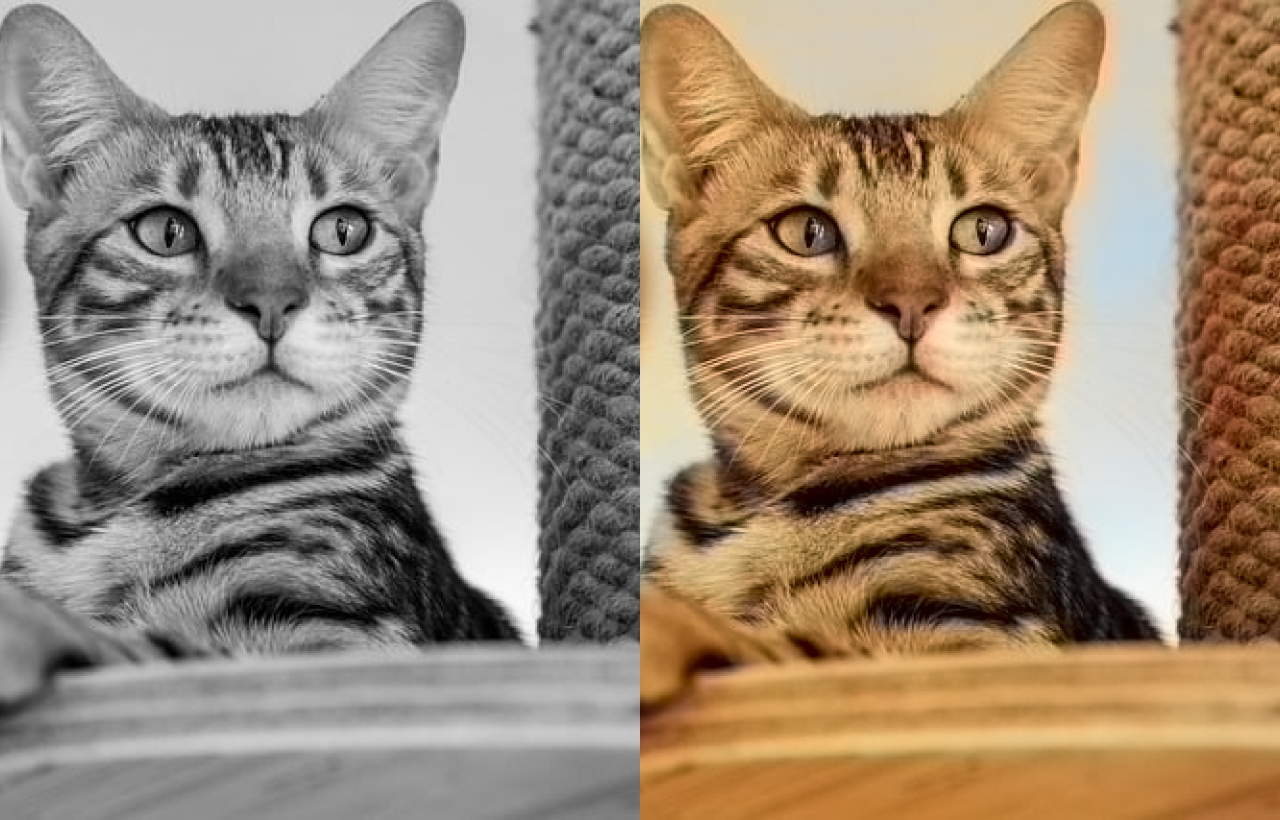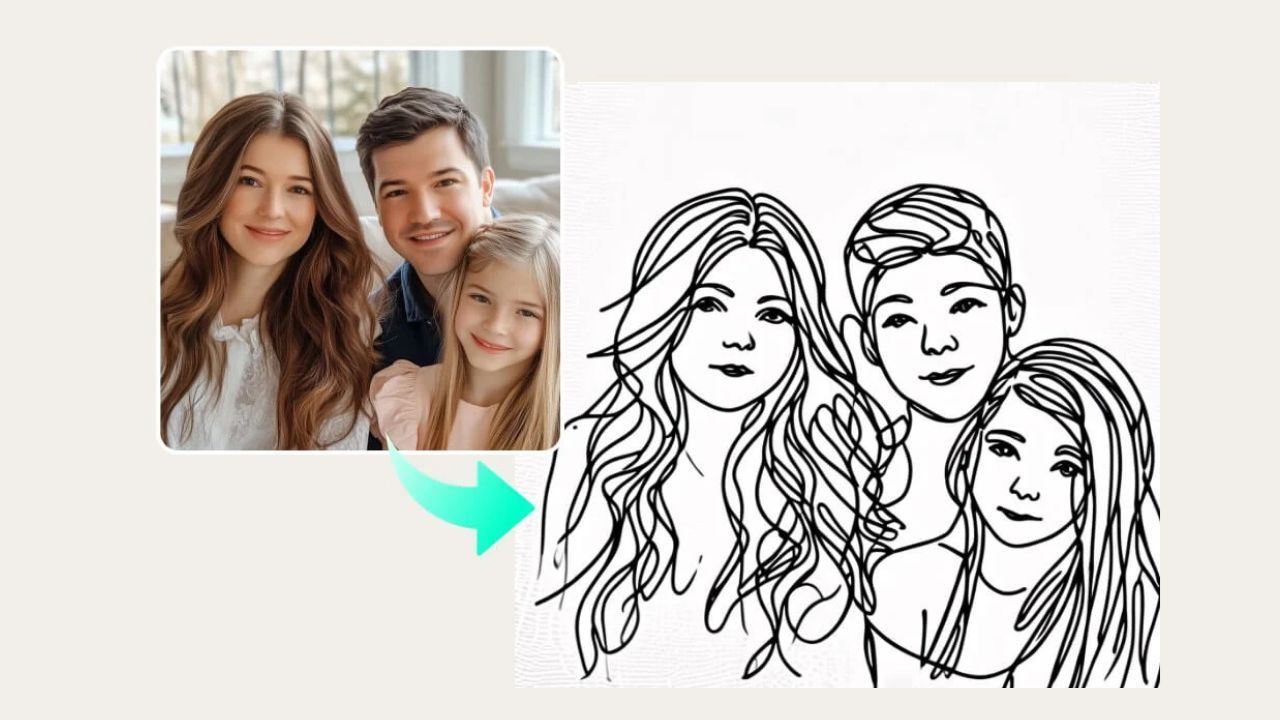How To Colorize Old Images Using AI?
Published: Dec 08, 2024

Shila Bastola
Content Writer @ Nep Tech Pal Pvt. Ltd.
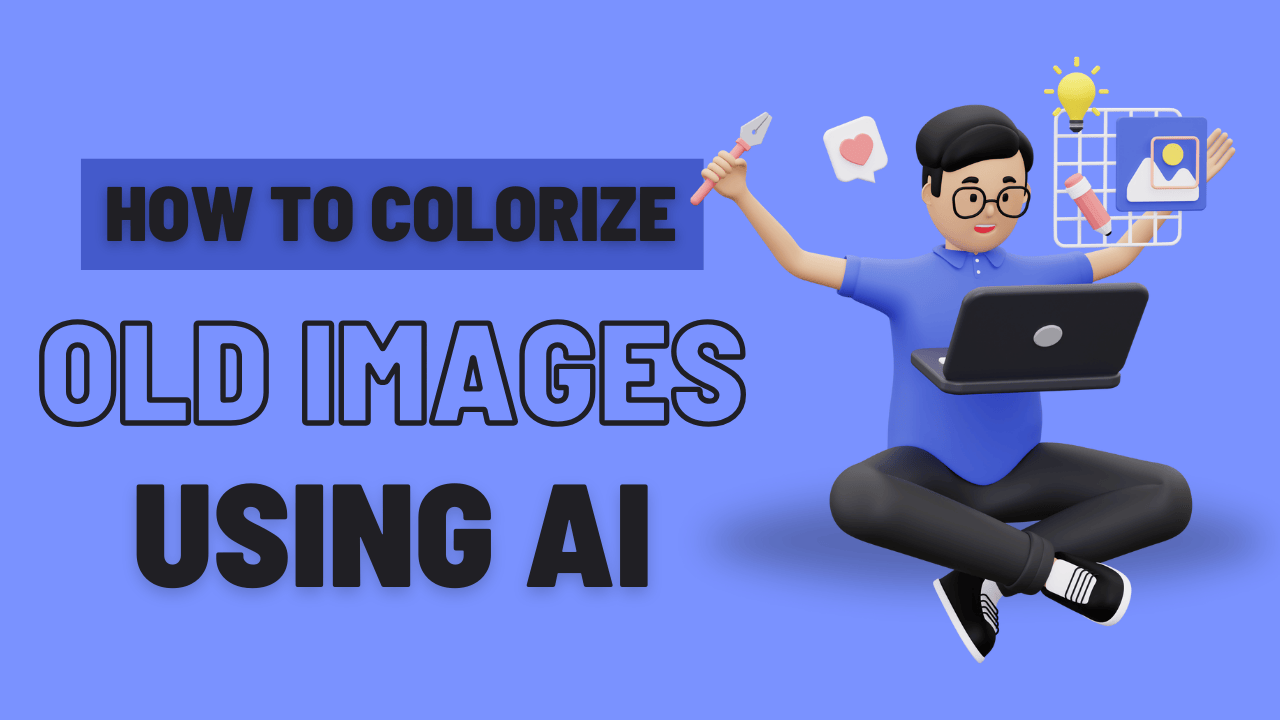
The process of adding color to monochrome, black and white, or grayscale images that match the natural tones and hues of the original scene is known as image colorization. It brings life into old or static visuals, making them more vibrant, relatable, and engaging. It can be used to improve historical records and restore family photographs.
Why Colorize Old Images?
The following are the main reasons for coloring old photos.
- Emotional AppealAdding colors to old photographs creates a stronger connection, making the image feel more real and less detached from reality.
- Preservation of HistoryColorized historical photos and documents can make them more engaging and accessible to modern audiences.
- Artistic EnhancementColorization can give simple images a fresh dimension by presenting fresh viewpoints and interpretations.
- Education and ResearchIn fields such as history or anthropology, colorization provides context to objects, people, and scenes that might otherwise be abstract in black and white.
The Role of AI in Colorization
AI has revolutionized the field of image colorization, offering fast, reliable, and highly detailed results that were once achievable only through manual effort. Here’s how AI enhances the process:
- Automation and SpeedAI tools can process and colorize images within seconds, eliminating the need for hours of manual editing.
- Realistic ResultsAI models are trained on massive datasets, enabling them to apply accurate and realistic colors to objects, clothing, skin tones, and environments.
- User-Friendly InterfacesThe majority of AI colorization tools are made to be easily used and require little technical knowledge. Users simply upload an image, and the software applies the colors automatically.
- Advanced FeaturesAI allows for fine tuning and personalization, enabling users to adjust tones or enhance specific areas for more precision.
Image colorization, especially with AI, has opened up possibilities for preserving and celebrating the past in ways never imagined before. It’s not just a technical process but also a creative and emotional journey that bridges history and modernity.
Benefits of Using AI for Image Colorization
AI has transformed image colorization, making it a fast, reliable, and accessible process for a broad range of users. Here are the key benefits of using AI for this task:
Enhanced Efficiency and Accuracy
- Speed of ProcessingAI-powered tools can colorize an image in a few seconds, a massive contrast to the hours or days required for manual colorization by skilled artists.
- Precision and ConsistencyAI models, trained on extensive datasets of real-world images, apply realistic colors based on learned patterns, ensuring consistent and natural results across a variety of images.
- Error ReductionThe automation eliminates human error, such as mismatched colors or uneven shading, ensuring professional-quality outputs even for beginners.
- Batch ProcessingAdvanced AI tools support the colorization of multiple images simultaneously, streamlining workflows for large projects.
Cost-Effectiveness
- Affordable SolutionsMany AI tools are free or available at a low cost, making professional-level colorization accessible to individuals and small businesses.
- Reduction in Labor CostsAI eliminates the need for hiring professional artists or editors for colorization, significantly cutting expenses for both personal and commercial projects.
- Scalable UsageAI tools can handle projects of any size without the added expense of additional resources, making them a practical choice for institutions like museums and archives.
Democratization of Photo Restoration
- Accessibility to All UsersAI tools have created a level playing field by making powerful technology accessible to all users, regardless of technical expertise. For non-experts, drag-and-drop interfaces and one-click features make the process easier.
- Empowering Personal ProjectsFamilies can now easily restore and colorize old photographs, preserving memories without needing professional assistance.
- Support for Historical PreservationMuseums, libraries, and researchers can leverage AI to restore and colorize vast collections of historical photos, making history more engaging and understandable to modern audiences.
- Cross-Cultural ConnectivityBy transforming black-and-white historical images into vivid color, AI allows people from all backgrounds to connect emotionally with history, art, and heritage.
In addition to improving the process's speed and quality, the application of AI in image colorization has also made it more widely available and reasonably priced. Whether for personal memories or large-scale restoration projects, AI is reshaping the way we bring old images to life.
Step-by-Step Guide to Colorizing Images Using AI
AI-based image colorization tools have simplified the process of transforming black-and-white photographs into vibrant, colorful images. This step-by-step guide will walk you through the process, from preparing your image to achieving the final results.
Preparing the Image for AI Processing
Before using any AI tool, it’s crucial to ensure that the image is in optimal condition for colorization. Follow these steps:
Digitize the ImageUse a high-resolution scanner to convert old photographs into digital format. Aim for at least 300 DPI to preserve details for AI processing.
Clean the ImageRepair any physical damage such as scratches, tears, or stains using basic photo-editing tools like Photoshop or GIMP. Remove unnecessary marks or blemishes that might confuse the AI.
Enhance Image QualityAdjust brightness and contrast to ensure the details are clear. Use noise-reduction software to eliminate graininess in the image.
Uploading the Image to the AI Tool
Upload the prepared image to a colorization tool driven by artificial intelligence. Here’s how:
Choose a Suitable AI Tool (AI Photocraft)Select a tool based on your requirements (e.g., AI Photocraft for simplicity and high-quality results).
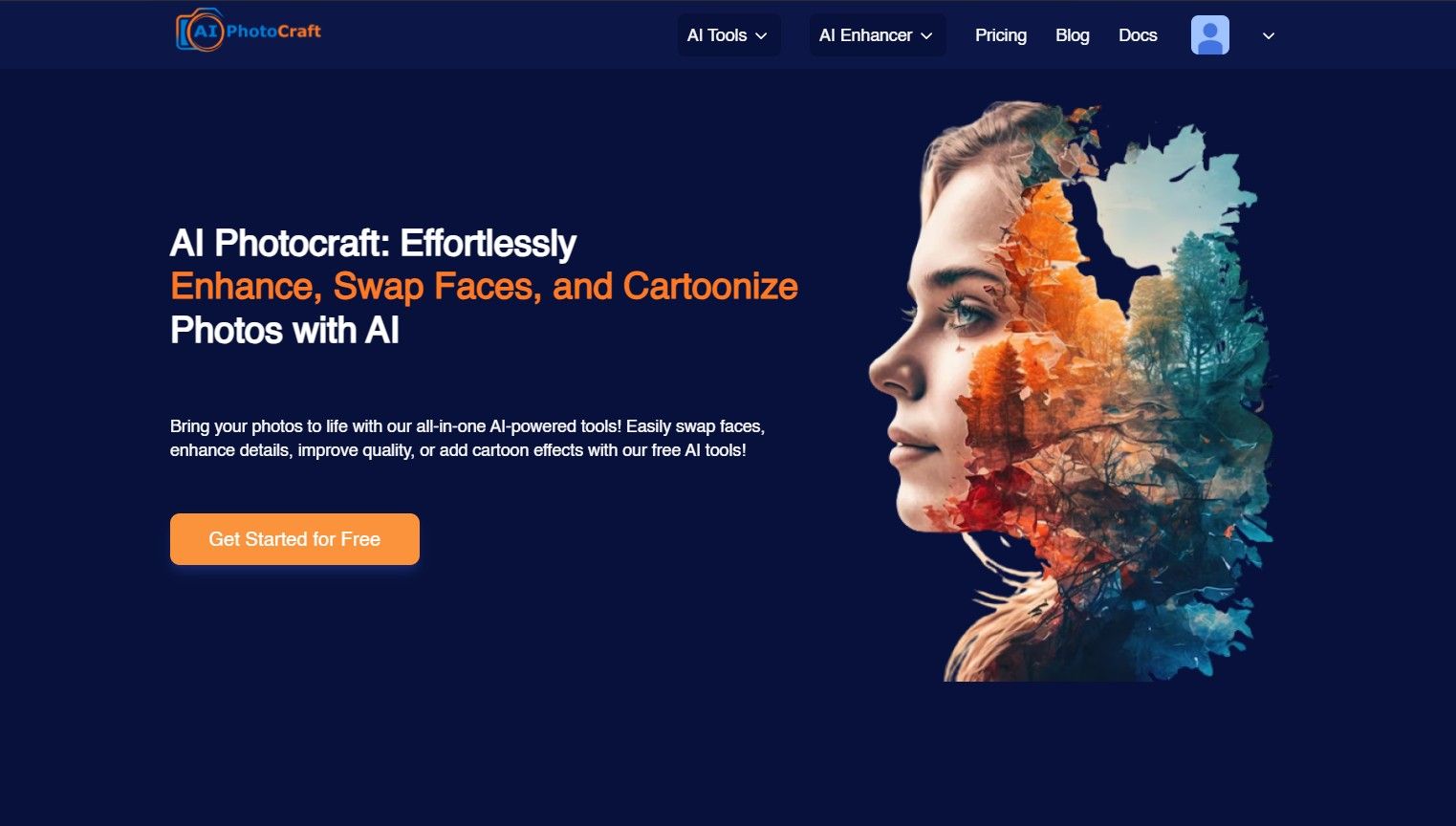
Log In or Create an AccountSome tools may require you to sign up for free or paid access, but AI Photocraft is beginner-friendly and simple to use, with free 10 credits when you sign up, and you can purchase more credits on the basis of your need.

Choose the Colorizer Tool
Following the signing process, you then have to select a colorizer from the list of options.
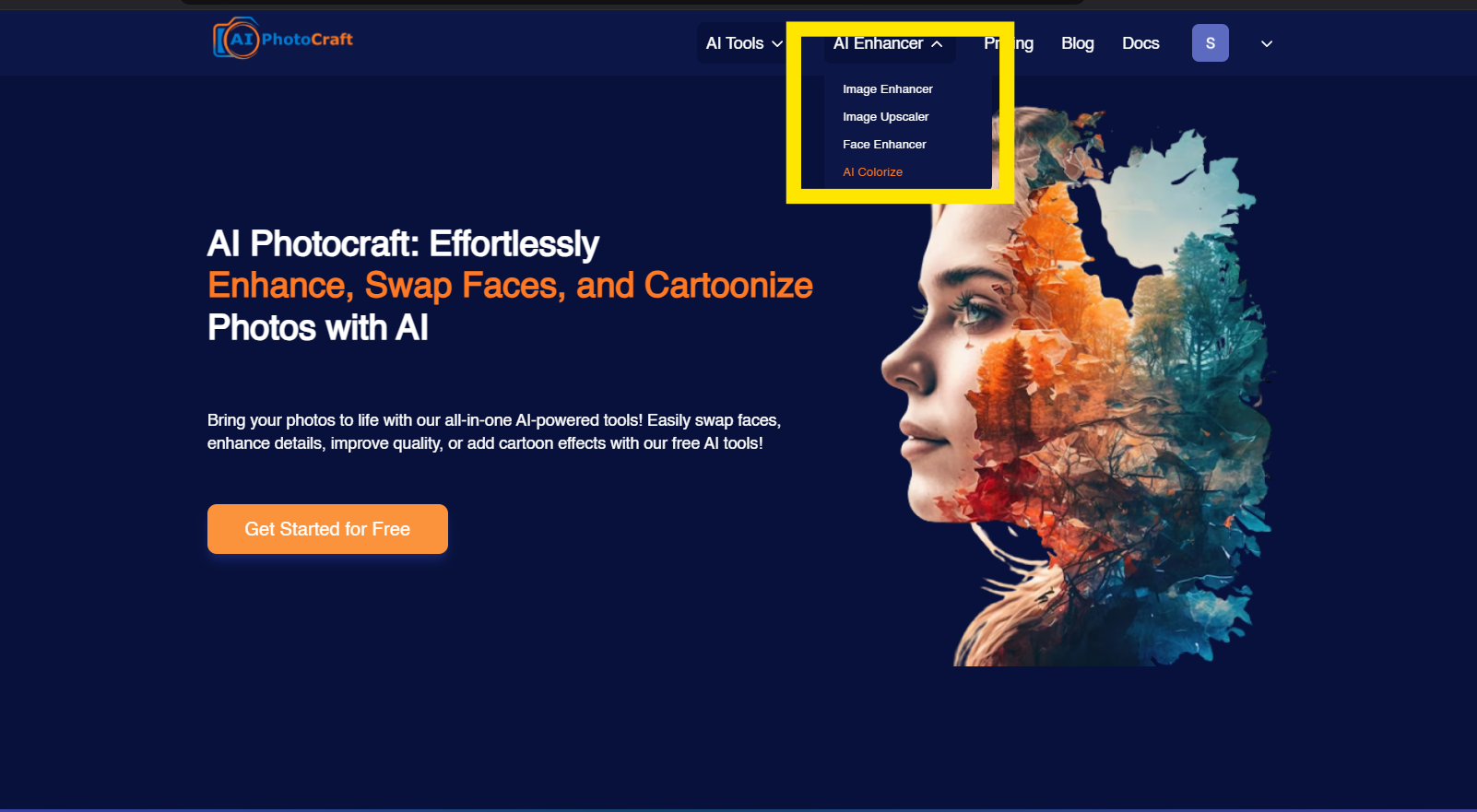
Drag and Drop the Image
Most AI tools feature a straightforward drag-and-drop interface. Alternatively, click the upload button and select the file from your device.
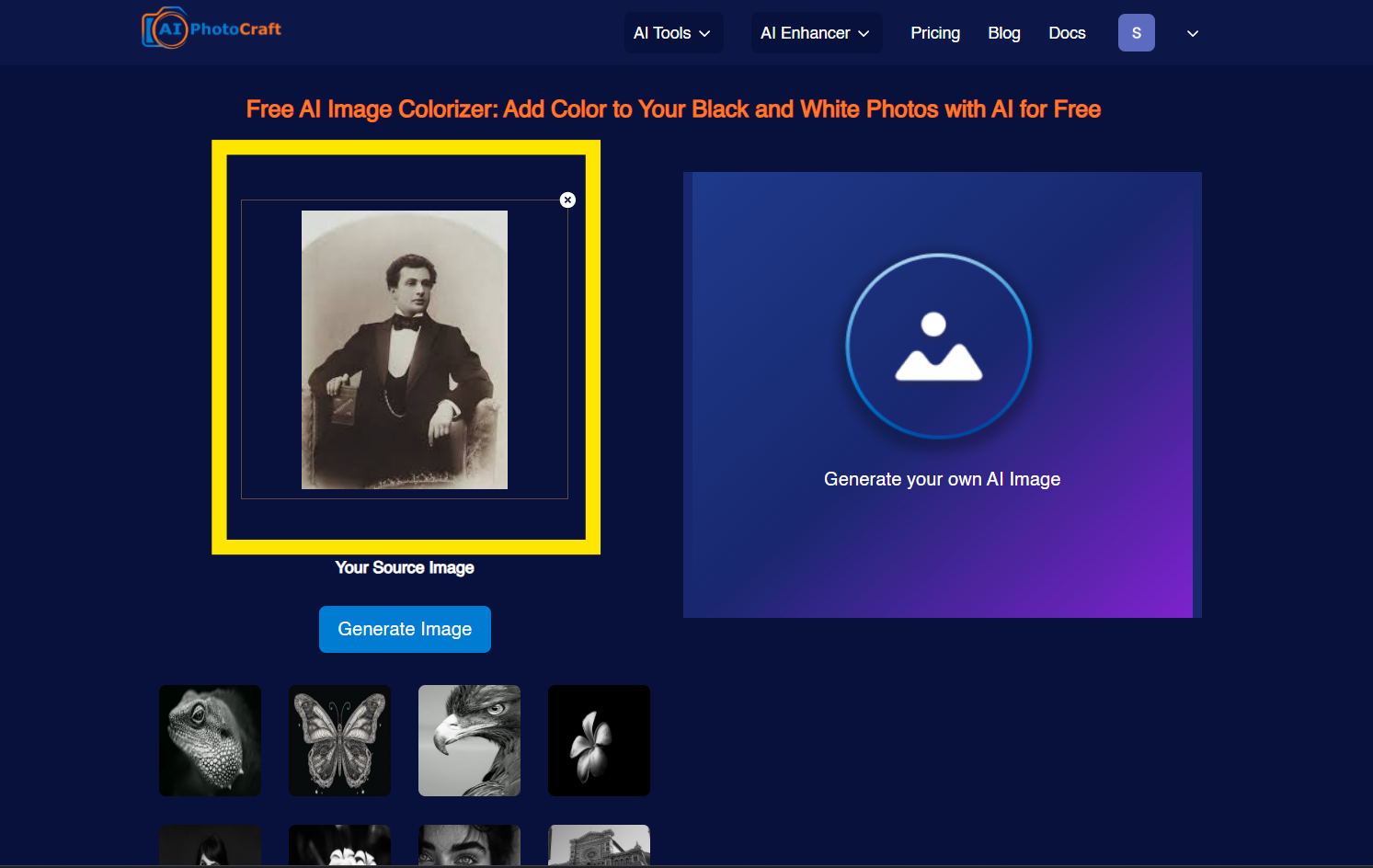
Click on Generate
Once the old black and white photo has been uploaded to the colorizer tool, click "generate image" and watch for the outcome.

Save the Image
Download the image in high resolution to preserve the quality. Save in multiple formats (e.g., JPEG for sharing, TIFF for archiving).

Before Vs. After Result
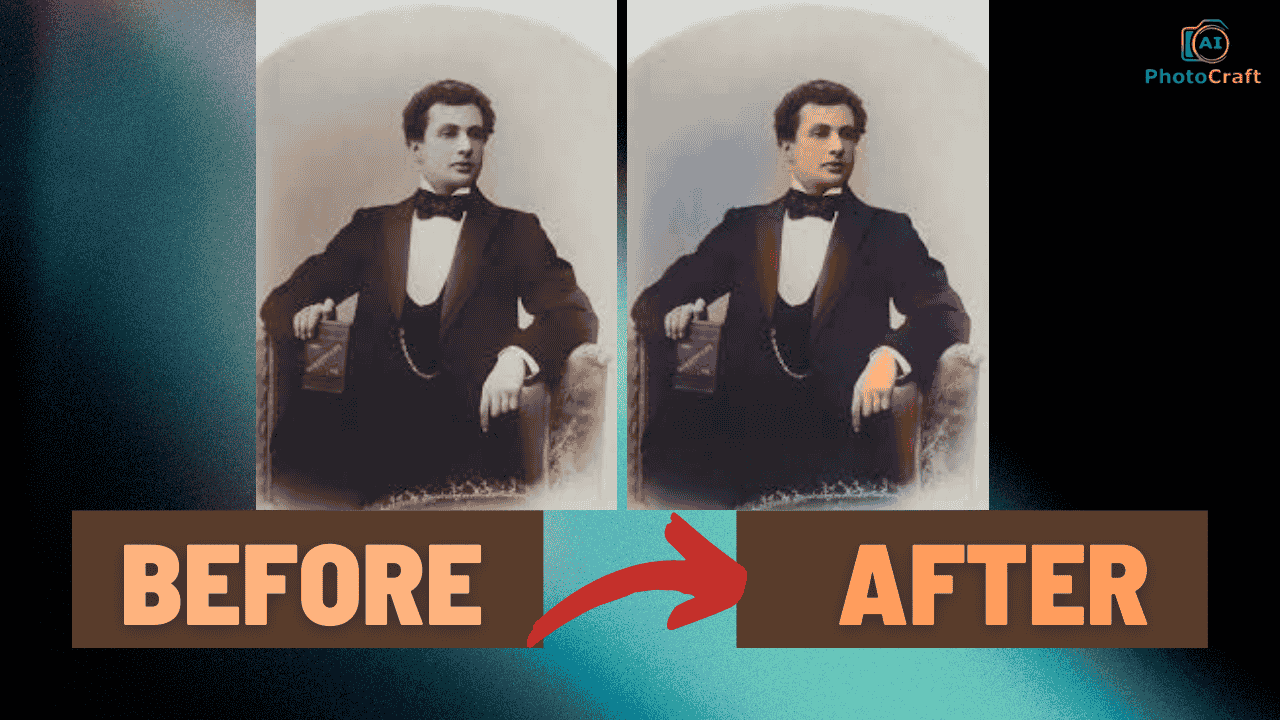
Future Trends in AI Image Colorization
AI-driven image colorization continues to evolve rapidly, fueled by advancements in machine learning, computational power, and innovative applications. These developments are shaping how we restore, interpret, and interact with historical and creative visuals. Below are some key trends that indicate the future direction of AI in image colorization.
Real-Time Colorization
Instant Results:Advancements in processing speeds and hardware efficiency are paving the way for real-time colorization. Users will soon be able to upload and colorize images or video frames instantly.
Application in Live Media:Streaming platforms and broadcasters could leverage real-time AI to colorize historical footage on the fly, offering live, vibrant renditions of old content.
Enhanced Historical Accuracy
New Training Models:In order to achieve more accurate colorization of clothing, architecture, and environments characteristic of a given era, future AI systems will make use of larger and more comprehensive datasets, including historical color references.
Integration with Metadata:AI tools will increasingly incorporate metadata from the original image, such as timestamps, location data, or descriptions, to make more informed decisions about the appropriate colors to apply.
Multimodal AI Systems
Text-Based Color Guidance:AI systems are evolving to accept textual input, allowing users to describe the desired colors ("Make the dress red and the sky golden at sunset"), enabling precise customization.
Cross-Referencing Databases:Future tools could cross-reference image databases, historical archives, or even user-uploaded photos to identify contextually accurate color schemes for specific elements in the image.Integration with Augmented Reality (AR) and Virtual Reality (VR)
Interactive Experiences:Colorized images will become part of immersive AR/VR applications, where users can explore historical scenes in vivid color.
Dynamic Colorization in VR:AI tools could dynamically colorize environments in real-time, allowing users to view and adjust the visual aesthetic as they interact with virtual historical recreations.
Advanced Video Colorization
Seamless Frame-by-Frame Colorization:AI will excel at applying consistent colors across thousands of frames in video, ensuring smooth transitions and natural-looking footage.
Restoration of Old Films:AI will play a significant role in remastering classic movies, applying lifelike colors to black-and-white films while maintaining the artistic vision of the original creators.
AI-Powered Hybrid Approaches
Collaboration Between AI and Artists:Hybrid workflows will emerge, where AI handles the bulk of colorization while allowing artists to add manual adjustments for unique, creative touches.
Enhanced Customization:Future AI systems will enable users to apply different artistic styles (e.g., impressionistic, realistic, or surreal) to colorized images.
Accessibility and Democratization
Mobile and Cloud-Based Tools:AI tools for colorization will become increasingly accessible on mobile devices, with cloud computing enabling high-quality processing without the need for powerful hardware.
Freemium Models:As technology becomes more accessible, more tools will adopt freemium models, offering basic features for free and premium enhancements for advanced users.
Improved Handling of Complex Images
Detail-Oriented Algorithms:AI models will become better at handling complex images with intricate textures, such as patterned fabrics, detailed architecture, or diverse natural elements like foliage.
Enhanced Human Features:Future tools will excel at rendering lifelike skin tones, facial expressions, and subtle lighting variations for human subjects.
Ethical and Transparent AI
Bias-Free Colorization:Developers will focus on minimizing cultural or historical biases in AI models, ensuring the tool’s outputs are representative and respectful of the original context.
AI Explainability:To promote greater trust and understanding, future AI systems will explain their choices, such as why a certain color was used on a particular element.
Interactive Learning Tools:Educators will use AI-powered colorization to teach students about history, art, and science in an engaging way, turning monochromatic images into relatable visuals.
Scientific Applications:Beyond aesthetics, AI colorization will assist researchers in analyzing grayscale images in fields like medicine, astronomy, and archaeology by applying scientifically accurate colors to data.
In the upcoming years, AI image colorization is expected to improve in accuracy, usability, and versatility. Whether through real-time processing, immersive VR experiences, or advanced customization features, these innovations will revolutionize how we restore and interact with historical and creative content. The future promises a blend of artistic freedom, historical fidelity, and technological sophistication, making AI colorization an indispensable tool for professionals and enthusiasts alike.
Popular AI Tools for Image Colorization
Advancements in artificial intelligence have brought a variety of tools to the forefront of image colorization. Below is an overview of some of the most popular AI tools, each offering unique features and capabilities to meet different user needs.
1. AI Photocraft
Overview:AI Photocraft is a top AI photo editing program that has a number of AI-powered tools that are essential for photo editing
Key Features:
- AI-based neural filters for automatic coloring.
- A single tool for all types of photo manipulation.
Pros:
- dependable and of industry standards.
- gives away free credits when you sign up.
- supports high-resolution and complex image formats.
Cons:
- It requires a paid subscription for more credits.
- Reliable internet access is required.
Best For:Anyone looking for a single AI photo editing tool for photo editing.
2. DeepAI
Overview:DeepAI is a straightforward online platform that uses artificial intelligence to automate the colorization process. It’s well-suited for users who prioritize simplicity and speed.
Key Features:
- Colorization is completely automated and has a straightforward drag-and-drop interface.
- Technical skill is not required, making it perfect for beginners.
- Good colorization for casual and personal use.
Pros:
- Free to use.
- Minimal setup and quick processing.
- Available on any browser-equipped device.
Cons:
- Limited customization options are available.
- Output quality may not meet professional standards.
Best For:Casual users looking to quickly colorize small personal photo collections.
3. DeOldify
Overview:DeOldify is an open-source AI model widely recognized for its ability to produce high-quality, lifelike colors. It offers both artistic and stable models, allowing users to customize the style of the output.
Key Features:
- Open-source nature allows tech-savvy users to customize the tool further.
- Colorization of images and videos is supported.
Pros:
- It produces some of the most realistic and detailed outputs in the field.
- Individual use is totally free (hosted versions may incur fees).
- supports GPU acceleration to process data more quickly.
Cons:
- It requires technical knowledge to install and use the standalone version.
- For older computers, it may require a lot of resources.
Best For:Users looking for high-quality results and willing to invest some time in learning the tool.
4. MyHeritage InColor
Overview:In summary, MyHeritage InColor is a great tool for personal use because it was created especially for restoring family photos
Key Features:
- specializes in enhancing and coloring old family photos.
- uses AI to strike a balance between aesthetic appeal and historical accuracy.
- provides colorization tools as well as tools to improve image clarity.
Pros:
- Very easy to use; no technical knowledge is needed.
- Premium subscription options and free trial options are available.
Cons:
- The free version has limitations on the number of photos processed.
- Subscription costs can add up for long-term use.
Best For:Families looking to restore old photographs with minimal effort.
Conclusion
AI has made image colorization accessible to everyone, transforming how we preserve and appreciate history. By following this guide, you can easily restore and rejuvenate your treasured memories. To test out these amazing AI editings, try AI Photocraft's AI Colorizer for free and receive 10 credits every day. Start exploring AI tools today to bring your old photos to life.
FAQs
- How does AI choose colors for old photos?
- AI analyzes grayscale tones and applies colors based on patterns from its training data.
- Can AI colorize black-and-white videos?
- Yes, advanced tools like DeOldify support video colorization.
- Are AI-colorized images authentic?
- While not always historically accurate, they provide a realistic interpretation based on available data.
- What is the best free AI tool for beginners?
- DeepAI and DeOldify are excellent options for beginners due to their simplicity and quality results.
- How do I fix errors in AI-colorized images?
- Use manual editing software like Photoshop for post-processing adjustments.
- Can AI handle severely damaged photos?
- AI can colorize even low-quality images, but repairing damage beforehand yields better results.


